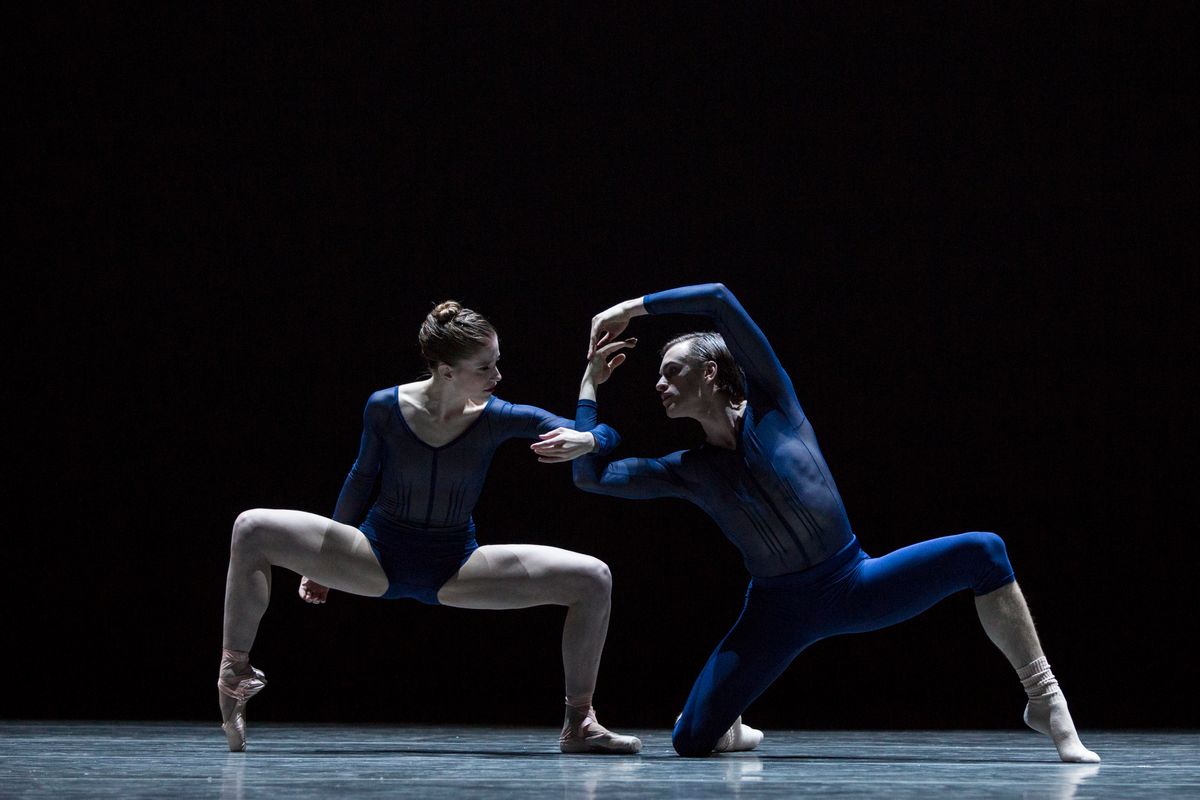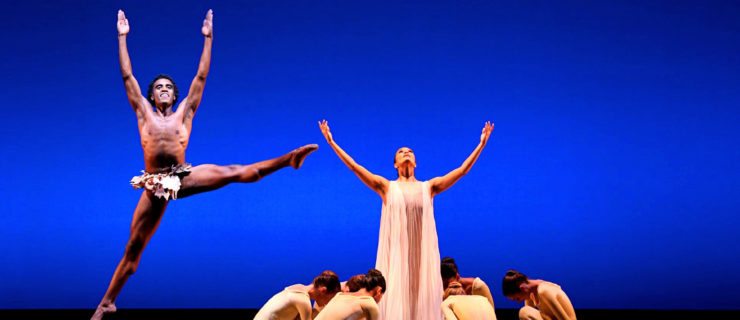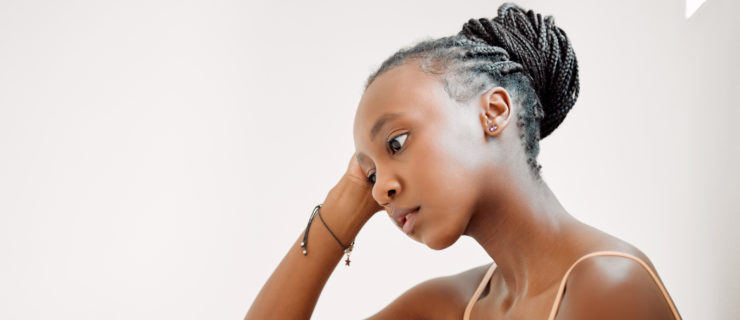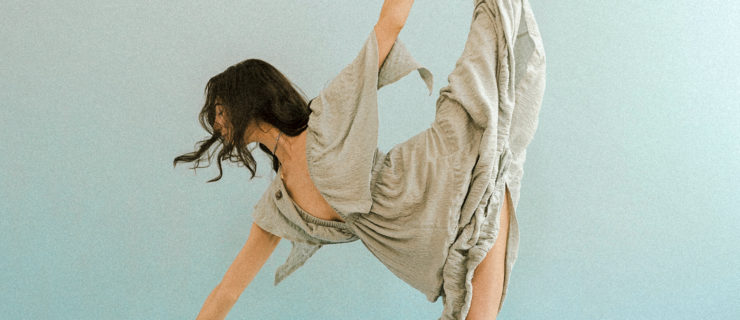Meet Three Dancers Fighting Mental Health Stigmas
Recently, there’s been a noticeable push for more education and support surrounding mental illness. And while every industry can benefit from this shift, it’s especially overdue in the dance world. “We need to get rid of the stigma,” says Nadine Kaslow, a psychologist who works with the dancers of Atlanta Ballet. “The fact is, when you have an ankle injury, you go to a doctor; when you have anxiety, you should go to a therapist.”
Kaslow emphasizes that most disorders are treatable and episodic, and if dancers get a proper diagnosis and therapy, they’ll feel better—which in turn will improve their dancing. “There is no question that physical performance is linked to mental health,” Kaslow says. “If your mental health is not in shape, you’re at an increased risk for injury and won’t perform optimally.”
Steven Loch, Soloist with Pacific Northwest Ballet

Loch with Pacific Northwst Ballet principal Lesley Rauch in Susan Stroman’s TAKE FIVE (Angela Sterling, courtesy PNB)
Since age 11, Pacific Northwest Ballet soloist Steven Loch has struggled with obsessive compulsive disorder (OCD). “Dance saved my life,” he says. “Performing allows me to process my experiences with mental illness through movement. The muscle memory distracts my brain and, for the most part, I’m able to leave my OCD in the wings.”
“OCD is a disorder in which a person has uncontrollable, reoccurring thoughts (obsessions) and behaviors (compulsions) that they feel the urge to repeat over and over. Specialists generally divide OCD behaviors into six categories: checking, contamination, mental contamination, hoarding, ruminations, and intrusive thoughts. Loch likes to say he has every type except for contamination. “I’ve struggled with somatic OCD, which is a hyperawareness of bodily functions like blinking, swallowing, or breathing,” he says. “I’ve had issues with numbers, and needing to do things a certain amount of times, but my main challenge is with intrusive thoughts.”
In 2014, then–23-year-old Loch had a meltdown which led him to check into an OCD-specific hospital in Wisconsin for two months. “That was a turning point for me,” he says. “PNB was so great about letting me take care of myself and my brain. I still struggle, but life is so much better than it used to be.”
During treatment, Loch learned that the only scientifically proven form of therapy for OCD is exposure and response prevention (ERP). “You make a list of the things that give you anxiety, and then you expose yourself to them until your anxiety goes down by half. It trains the part of your brain that deals with fear, and teaches it that what you’re experiencing is a false alarm.” Loch says working on his mental health has changed his life. “Everyone should work on their mental health, not just those of us with severe disorders.”
In April 2018, Loch opened up publicly about his mental illness in an article for The Seattle Times. “I chose to share my story because I knew it could help people,” Loch says. “I have had more people thank me for my candor than I could’ve ever imagined. There’s an aspect of shame in having a mental disorder. Many people hide it and let it fester. Getting it out in the open is freeing.” Loch feels a desire to help the up-and-coming generation of male dancers. “I am a soloist with a major ballet company. I want young dancers to see me and think, ‘If he can deal with this, and be successful, then what will stop me from doing that as well?’ ”
Ali Deucher

Deucher performing “A Day in My Head” at New York City Dance Alliance (Evolve Photo and Video, courtesy Deucher)
When she was 15, Ali Deucher realized the thing she used to love most in the world—dance—no longer gave her joy. Scared of being judged, she kept her feelings to herself for a year before finally reaching out to her mother for help. “It got to the point where I was in such a state of sadness that I didn’t want to dance or go to school. I didn’t even want to get out of bed,” Deucher says.
That moment of vulnerability set Deucher on the path toward healing. “My mom took me to a therapist,” Deucher says. “That helped me work through PTSD from some situational trauma, and it’s been a huge relief for me. I learned skills to separate my depression and anxiety from my everyday experiences. Sometimes I get so overwhelmed it seems like there is not one enjoyable part of my life. I start to feel that dance is part of the problem. Therapy taught me that it can actually be my way to cope.”
In 2018, Deucher choreographed a solo entitled “A Day in My Head.” “It was cathartic for me,” she says. “There were feelings I had that I couldn’t figure out how to convey with words. They felt trapped inside of me, but when I created that piece I was finally able to accurately share what I was going through.” Each time Deucher performed her piece, she was met with gratitude and a sense of camaraderie from dancers in the audience who also struggled with anxiety. In June 2018, she shared the piece on Instagram and was overwhelmed by the response. “Sometimes you think you’re the only person in the room who feels the way you do,” Deucher says. “But if you just reach out, you may find that the person sitting right next to you is fighting the same battle. My willingness to be open has given other people the confidence to be open and begin their own healing journeys.”
Though Deucher says she has gained a lot of strength through diagnosis and treatment, she still struggles with severe anxiety. “It’s not something that has gone away—I am continuously adapting to my struggles and finding ways to understand myself each day.” Having just finished her freshman year at Pace University in NYC, Deucher has developed a set of coping mechanisms. “It’s different for everyone, but alone time in the studio really helps me. I take Zoloft for my anxiety, and I write down my feelings when I’m struggling.”
Luna Montana, YouTuber and Student at California Dance Theatre

Jean Celeste Photography, courtesy Montana
In December 2018, after a long and grueling Nutcracker dress rehearsal, then-17-year-old Luna Montana returned home and reviewed the day’s footage. As she watched herself dance, she broke into tears while comparing herself to the other dancers, feeling hatred toward her body. Montana, now 18, has been struggling with what she believes is body dysmorphia since the seventh grade, and she decided to open up about her experience with her 230,000 YouTube subscribers in a video titled “I hate my body.” “I hate myself,” she says into the camera as she brings her hand to her face before collapsing into shuddering sobs. “I hate that I look so fat in the video. I hate my feet. I hate my leg shape. I hate my arms—they’re fat. I hate my hands—they’re weird. I hate literally everything about myself.”
She filmed the moment because she knew her viewers could relate and wanted to be open with them. “I feel most comfortable when I’m making a video diary, so I filmed, edited, and posted it, and it was terrifying, but sharing my story has done nothing but good,” Montana says. “The kind words from my audience have really helped me cope with my body dysmorphia. This is a huge topic in the dance world, and I hadn’t seen many other YouTubers take it on, so I decided it was the way I could make a difference.”
Though posting her experience for her viewers was intimidating, she was more concerned about the opinions of her friends at school, her friends at dance, and her teachers. Thankfully, their reactions have been predominantly positive. “Most of my teachers have been really supportive,” Montana says. “But some of the more old-school ones told me that I shouldn’t share my weaknesses so publicly. They don’t understand why our generation chooses to be so real on the internet.” Montana understands why they’re concerned—privacy is important, and the dance world has been built around hiding imperfections—but she is resolute in her decision. “I’m helping people. This is too important a topic to be afraid of.”
By working through her struggles with body image and body dysmorphia, Montana has gained an even healthier relationship with dance. “For a while, dance was really bad for me mentally,” she says. “But as I’ve been open and worked through things, I’ve found that dance is my therapy.” Though Montana doesn’t feel everyone needs to be as public about their experiences as she has, she recommends speaking up about body struggles to a close friend or loved one. “Reach out so you can get the help you need,” Montana says.




